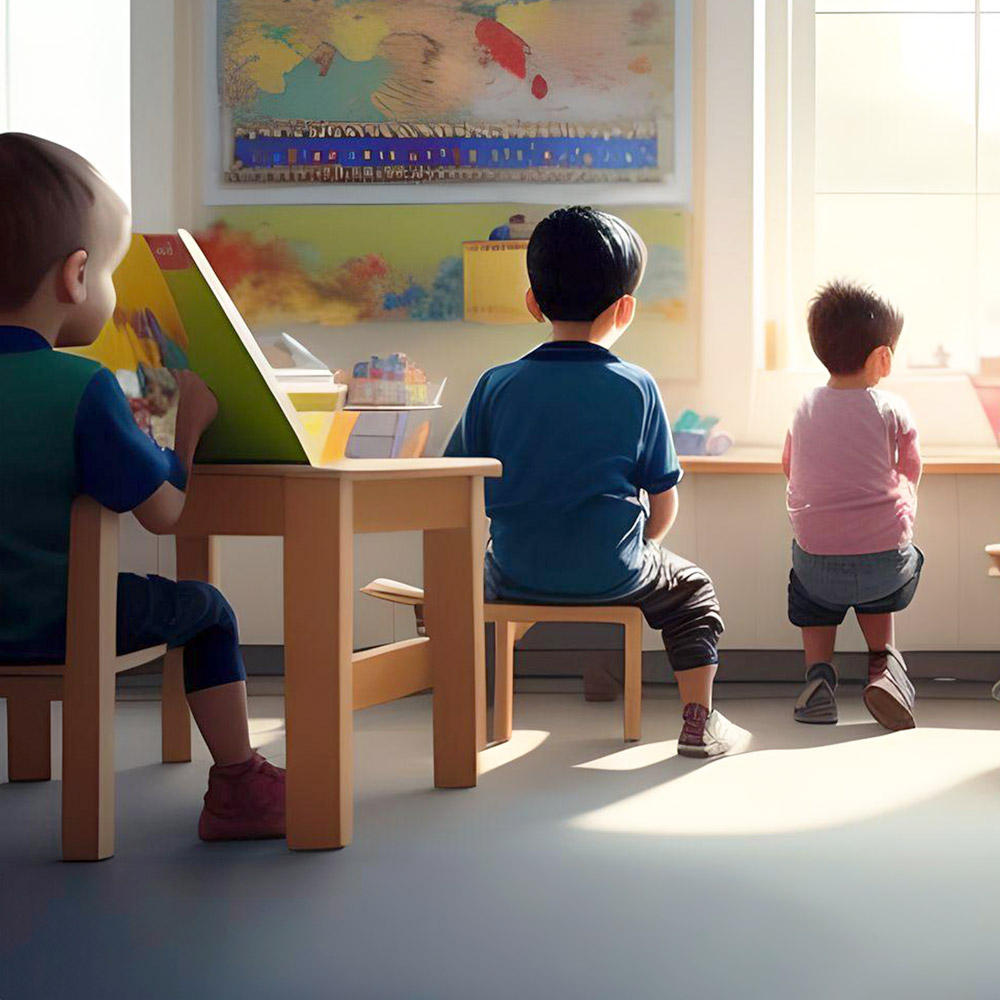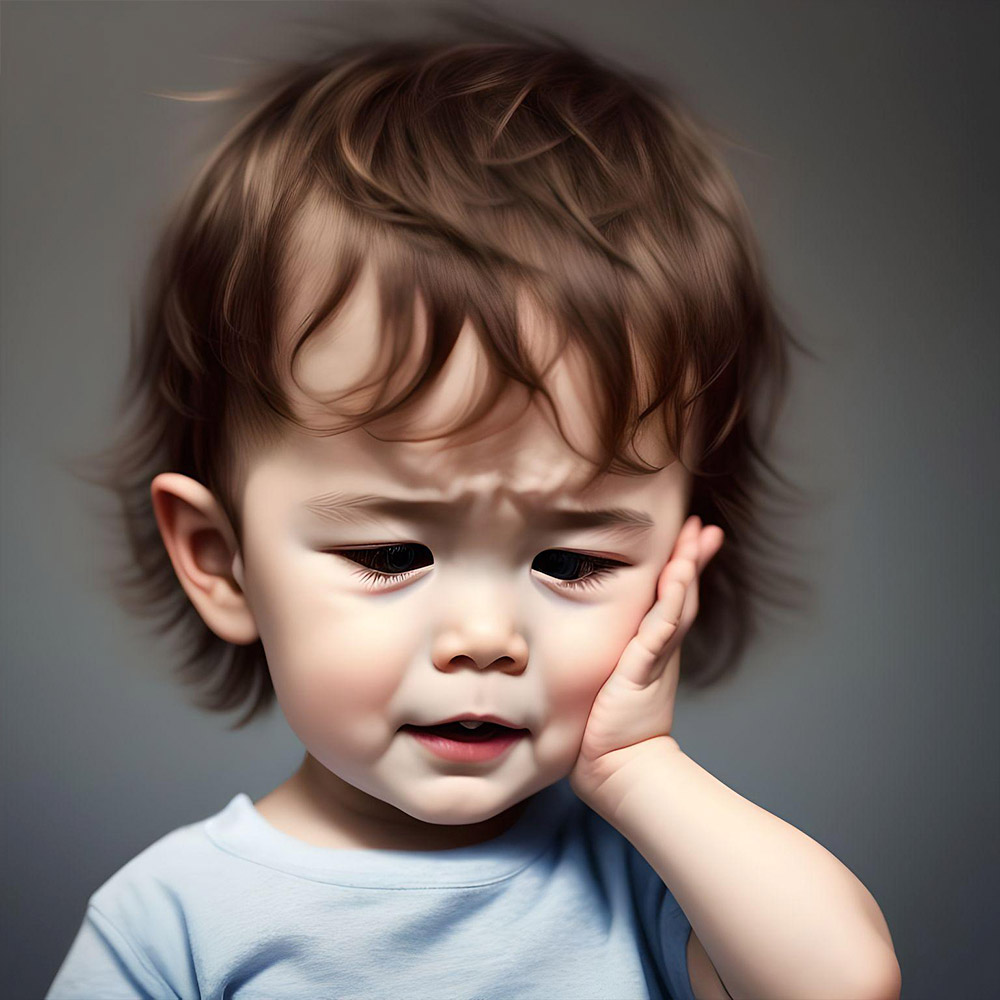
Exploring Autism Spectrum Disorder

Signs of Autism Spectrum Disorder (ASD)
Autism is a spectrum disorder that encompasses a wide range of symptoms, characteristics, and levels of impairment that can vary significantly from one individual to another. The term “spectrum” is used to emphasize the diversity and complexity of the condition, as well as the fact that autism affects people differently and to varying degrees.
If you suspect your child may be within the autism spectrum, we cannot emphasize the importance of early diagnosis from a licensed healthcare provider. However, it is helpful to know the signs of ASD that would signal that it is time to consult a professional.

Signs of autism include:
- Delays in social communication and interactions.
- Restrictive or repetitive behaviors.
- Over-interest/restrictive interest in objects.
- Delayed language and motor (movement) skills.
This list is not exhaustive, and the presence of any/all of these may or may not indicate a diagnosis. Early diagnosis is critical for effective interventions and best outcomes. For a more detailed list, take a look at the CDC website here: Signs and Symptoms of Autism Spectrum Disorders | CDC
What is ASD?
Autism is a neurodevelopmental disorder affecting behavior, communication, and social interactions. According to the CDC’s Autism and Developmental Delay Monitoring (ADDM) Network, about one in thirty-six 8-year-old children were identified as having autism and boys are four times more likely to be diagnosed than girls.
Autism is commonly referred to as a ‘spectrum disorder,’ meaning that the severity and delays an individual may experience vary widely. For example, while a dual diagnosis of intellectual disability is not uncommon (about 1 in 3), intelligence itself is not a factor in diagnosing autism. Two individuals with autism will rarely profile identically, even though there is a core set of symptomologies. For intervention to be effective, an evaluation must use standard assessments, observation, and family interview(s). These will provide a more complete picture of the person’s needs.

Early Behavioral Signs of ASD
Here are several key behavioral signs that can be early warning signs of autism spectrum disorder:
- Irregular developmental progress: One early warning sign of ASD is when a child’s developmental progress simply stops and, in some cases, regresses. For example, a child may start to speak then lose the ability to do so. Or a child may make all the developmental milestones through 12 months but then stop.
- Echolalic behavior: Echolalia involves repeating or echoing words, phrases, or sounds that a person has heard, either immediately or later, without necessarily demonstrating a full understanding of their meaning. If someone asks, “What’s your name?” a child showing echolalic behavior might respond, “your name.”
- Hypersensitivity to sounds: These responses to sound could also be an early indicator of ASD.
- If your child regularly covers their ears when they hear certain sounds.
- If they display hyposensitivity to loud noises behind them.
- If they do not turn to look or are otherwise unresponsive to loud sounds.
- Stereotypy: “Stereotyped behavior” or “stereotypy” is a term used in psychology and psychiatry to describe repetitive, nonfunctional behaviors or movements that appear purposeless and lack a clear goal. Hand-flapping, rocking, body spinning, repetitive vocalizations, finger flicking, and head-banging are all examples of “stereotypy.” As explained above, it is uncommon for two children with autism to profile the same way, and a child with a diagnosis may display some, all, or none of these behaviors.

Social and Communication Challenges Associated with ASD
Delays in social skill development are one of the most telling signs of autism. A child may not respond to their name, engage in pretend play, or even notice that another child or person has joined them. Additionally, a child may lack the “Theory of Mind,” which is the ability to tell what others are thinking or might be feeling. Other social indicators of non-vocal communication, such as facing the person they are talking to or making eye contact, may also be absent.
Many times, children with autism will not initiate contact with family members or others, even if they are encouraged to do so. Since almost all learning is social, this behavior can often be the toughest barrier for children within the autism spectrum to progress through. These delays create obstacles to the most common learning modalities, including group instruction, classroom teaching, and peer-to-peer learning.


Repetitive Behaviors and Restricted Interests Can Be a Hallmark of ASD
Repetitive movement and over-focus on objects can also be signs of autism. These behaviors might include repeatedly lining up things the same way, an obsession with a specific toy, or an over-focus on one particular part of a toy, like the spring in a bouncing toy or the wheels on a car).
Because repetition and predictability are so crucial for children within the autism spectrum, any interruption to a daily routine is difficult for children with ASD and may cause them to have outbursts or tantrums.

Sensory Sensitivities That May Be an Early Sign of ASD
Children within the autism spectrum often display hyper or hypo sensitivity to sights, sounds, touch, or taste.
Here are some examples:
- Hypersensitivity to Sounds: Covering ears or reacting strongly to loud noises like sirens, vacuum cleaners, or hand dryers.
- Hyposensitivity to Sounds: Not responding when their name is called or seeming oblivious to loud sounds.
- Hypersensitivity to Lights and Visual Stimuli: Difficulty with visual tracking can make it challenging to focus on moving objects or people.
- Hyposensitivity to Lights and Visual Stimuli: Staring at bright lights or flickering objects without apparent discomfort.
- Hypersensitivity to Touch and Textures: Reacting strongly to certain fabrics or clothing tags, which can lead to discomfort or meltdowns.
- Hyposensitivity to Touch and Textures: Seeking out deep pressure or intense physical sensations, such as squeezing themselves between cushions or jumping on a trampoline.
- Hypersensitivity to Taste and Smell: Being extremely selective or picky about food textures and tastes, often preferring a limited range of bland or particular foods.
- Hyposensitivity to Taste and Smell: Eating non-food items (pica) due to a lack of sensitivity to taste or texture.
The Autism Speaks website has an excellent breakdown of potential sensory issues: Sensory Issues | Autism Speaks


The Importance of Early ASD Detection
ABA therapy can help at any age, but ample research shows when diagnosis and intervention begin at a younger age, children have a better outlook for success with a shorter duration of treatment. Look at it this way: a child who is diagnosed and starts intervention at the age of 3 will, at most, have a 3-year delay. Whereas a child who is diagnosed at the age of 14 could have significantly more prolonged delays. Also, the younger the child, the less behavioral history they have, making it easier for intervention to be effective. We cannot say it enough: early childhood is the best time for diagnosis and when you can expect to see the most progress as a result of intervention.

How to Get Help and Support When You Suspect Your Child is within the Autism Spectrum
The best place to seek help is your primary care physician. They can lead you to other local resources to help you get started, but be sure you use a practitioner with experience in diagnosing autism. It is not uncommon for dual/comorbid diagnosis with autism. You will want an assessment that covers autism to rule out a potential false diagnosis. Also, your insurance provider is another place to start, and most now cover autism services. Finally, Autism Speaks is a great resource with lots of how-tos and links to get you started as well: Autism Education & Resources | Autism Speaks


Additional Resources for Early Detection of ASD
Please visit our Educational Resources section to find several valuable resources about Autism Spectrum Disorder, ABA Therapy, and support for families of individuals within the autism spectrum.
Additionally, for early intervention, visit Autism Speaks for The Modified Checklist for Autism in Toddlers. The 20-question screener will help you determine if further evaluation may be needed. You can use the screener results to discuss any concerns you may have with your child’s healthcare provider.